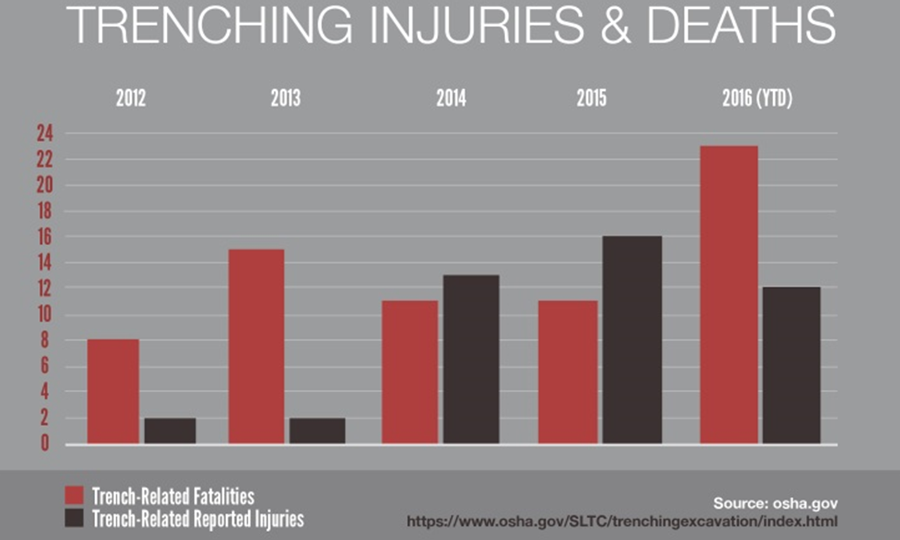Two workers died in a trench in Boston last year because their employer failed to take basic stopes to prevent the trench from collapsing, according to OSHA, which cited the company for 18 safety violations. Fines aren’t the only consequence of the double fatality; a Suffolk County grand jury has indicted Atlantic Drain and company owner, Kevin Otto, on two counts each of manslaughter and other charges in connection with the Oct. 21, 2016 deaths.
Robert Higgins and Kelvin Mattocks died when the approximately 12-foot deep trench in which they were working collapsed, breaking an adjacent fire hydrant supply line and filling the trench with water in a matter of seconds.
Employer cited previously for same hazards
“The deaths of these two men could have and should have been prevented. Their employer, which previously had been cited by OSHA for the same hazardous conditions, knew what safeguards were needed to protect its employees but chose to ignore that responsibility,” said Galen Blanton, OSHA’s New England regional administrator.
OSHA’s investigation found that Atlantic Drain Service Co. Inc. failed to provide basic safeguards against collapse and did not train its employees – including Higgins and Mattocks – to recognize and avoid cave-in and other hazards.
Investigation findings
OSHA’s inspection determined that Atlantic Drain and owner Kevin Otto, who oversaw the work on the day of the fatalities, did not:
-Install a support system to protect employees in an approximately 12-foot deep trench from a cave-in and prevent the adjacent fire hydrant from collapsing.
-Remove employees from the hazardous conditions in the trench.
-Train the workers in how to identify and address hazards associated with trenching and excavation work.
-Provide a ladder at all times so employees could exit the trench.
-Support structures next to the trench that posed overhead hazards.
-Provide employees with hardhats and eye protection.
As a result, OSHA has cited Atlantic Drain for a total of 18 willful, repeat, serious and other-than-serious violations of workplace safety standards and is proposing $1,475,813 in penalties for those violations. OSHA cited Atlantic Drain trenching worksites for similar hazards in 2007 and 2012. The full citations can be viewed here.
OSHA and the department’s Regional Office of the Solicitor worked with the department’s Office of the Inspector General, the Boston Police Department’s Homicide Unit and the Suffolk County District Attorney’s Office during the course of this investigation.
Trench hazards
The walls of an unprotected trench can collapse suddenly and with great force, trapping and engulfing workers before they have a chance to react or escape. Protection against cave-in hazards may be provided through shoring of the trench walls, sloping the soil, or by using a protective trench box. Employers must ensure that workers enter trenches only after adequate protections are in place to address cave-in hazards. More information about protecting employees in trenches and excavations can be found here and here.
“We want to emphasize to all employers that trenching hazards can have catastrophic consequences if they are not addressed effectively before employees enter a trench,” said Blanton.



